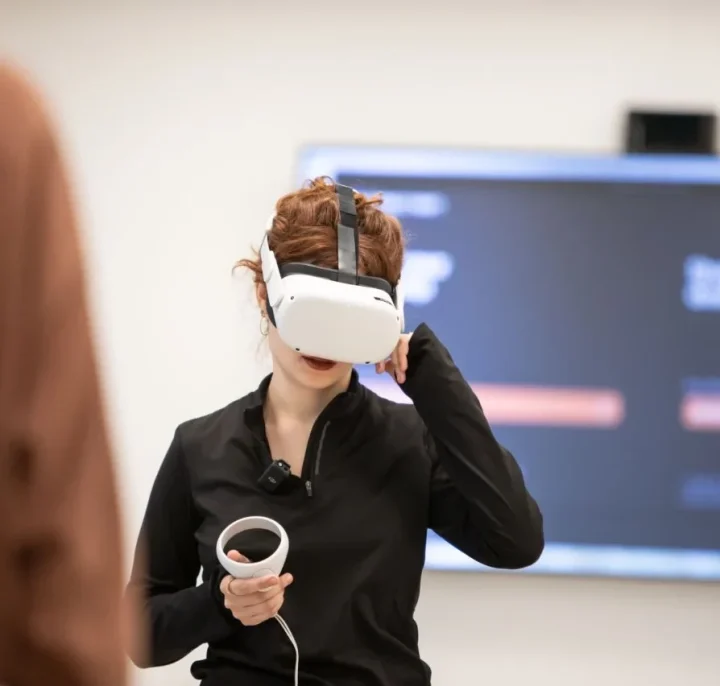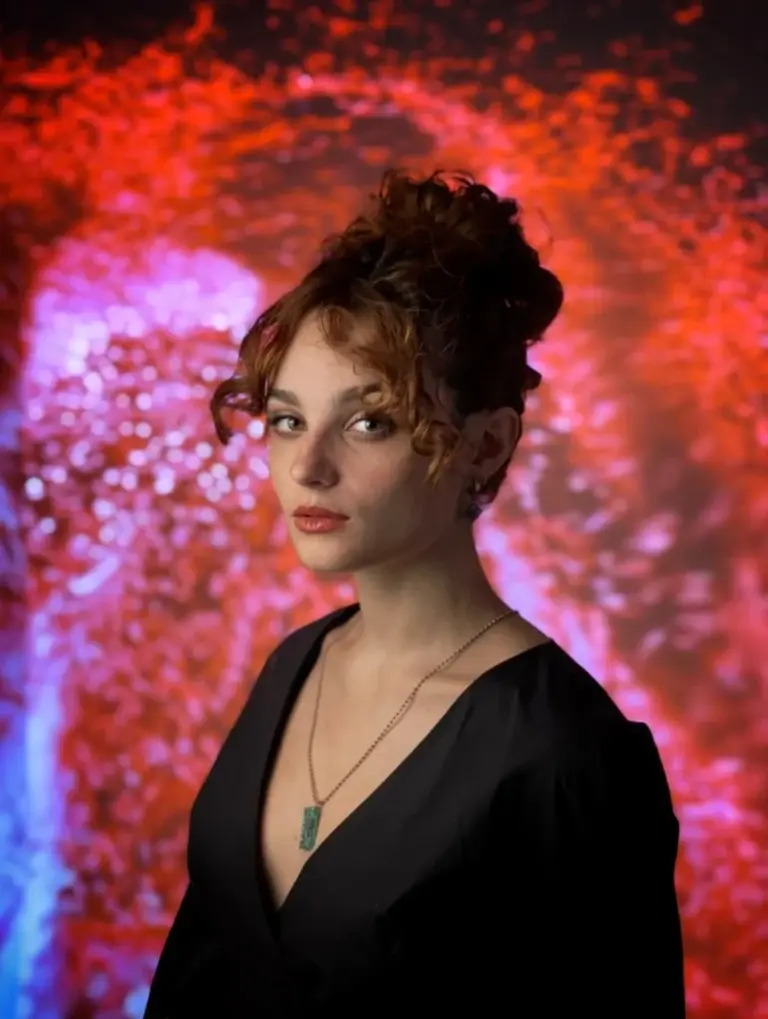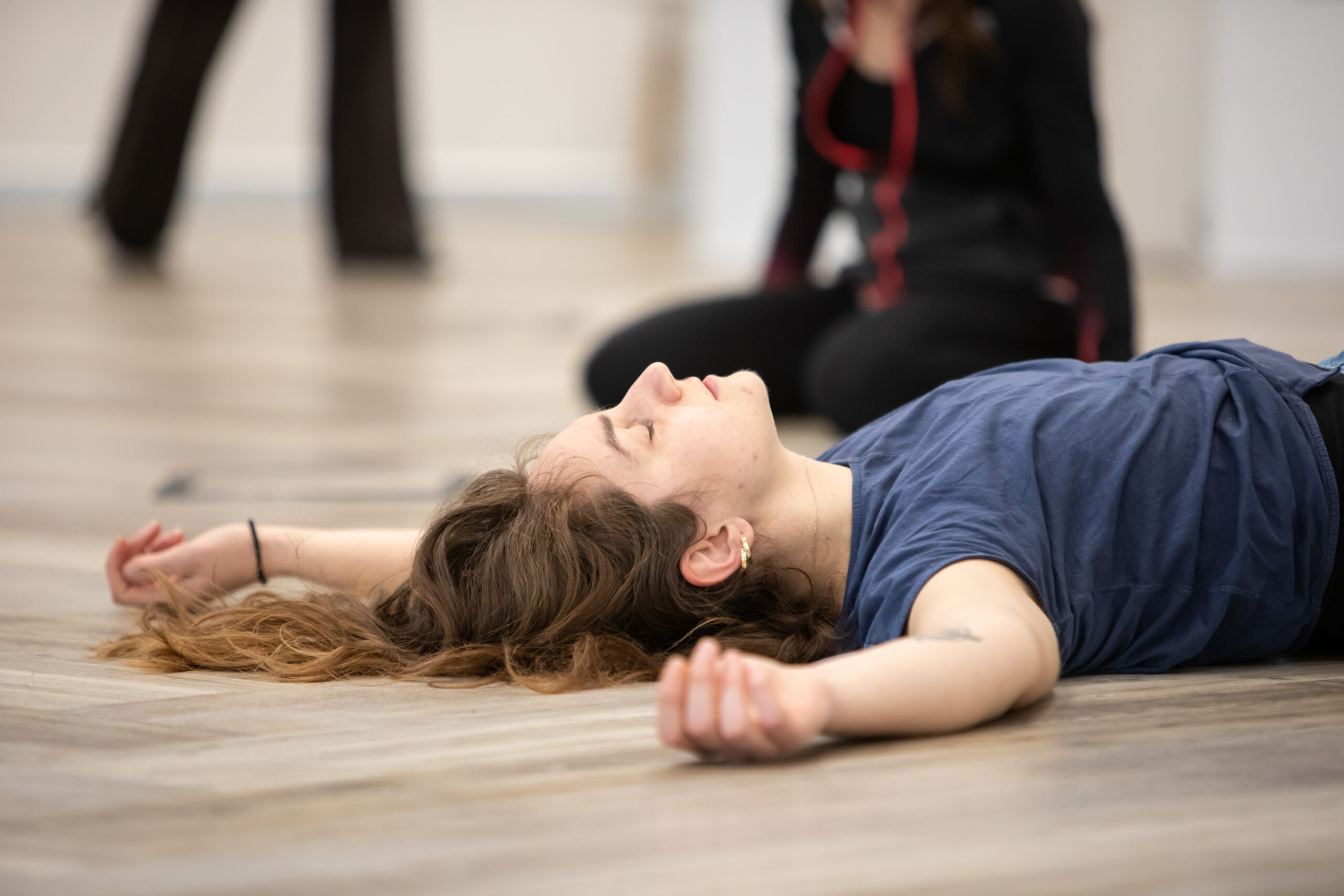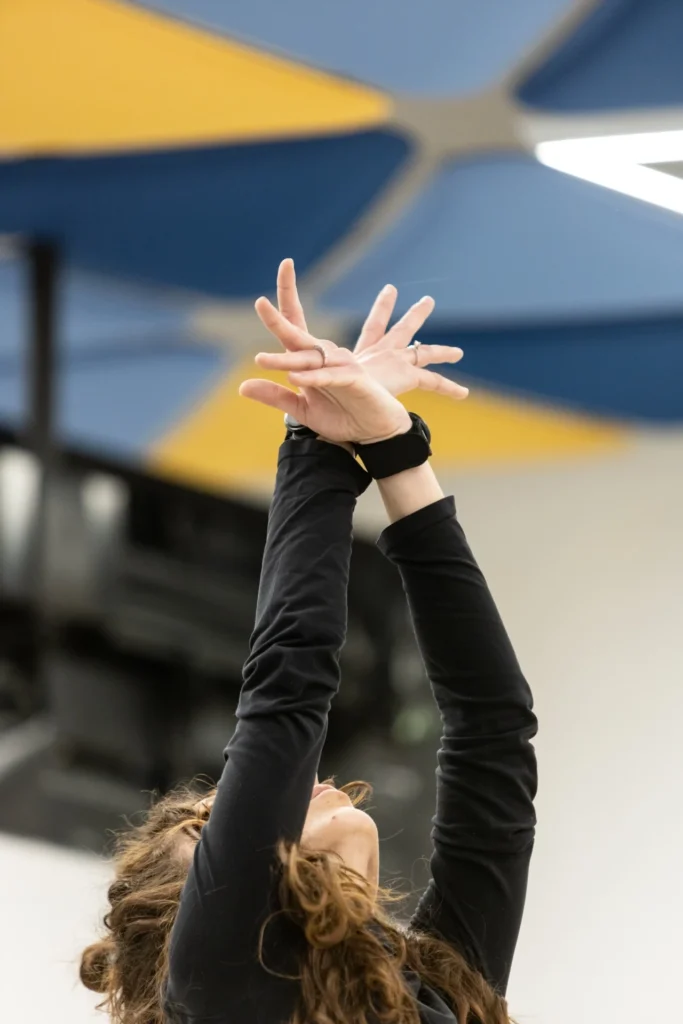
CMH, acronym of Creative Movement Hacking®, represents a versatile support technique created by Cora Gasparotti, which acts as a container of practices designed to enhance creativity, technique, expressiveness and body awareness through the use of New Technologies.
The result of a long process of research and experimentation, CMH offers programs designed for dancers, actors and performers and specific paths dedicated to people's well-being. The method offers somatic and exploratory approaches, promoting motor identity and the simultaneous development of technical and creative skills, allowing for customization of goals and adapting to participants' skill level.
Deepen your relationship with the surrounding space and explore new qualities of movement through unexplored viewpoints.
Designed for dancers of various levels of training, age and technique of reference, the course proposes practices that use New Technologies as an amplification of body and space perception, in order to provide new creative stimuli, choreographic or improvisational, and refine technical principles of the students, accompanying them toward a personal research for their own motor identity, favoring qualitative versatility and expressive authenticity.
Adaptable to different ages and contexts, from corporate to educational and cultural settings, the course is designed to provide new tools for body awareness to anyone who wants to deepen their relationship with movement for a renewed balance between mind, body and expression. The proposed experiences aim at working on physical and emotional blocks by exploring the relationship with others and the surrounding space, the research for one's own authentic movement and the communicative abilities of one's own body. The course promotes a sustainable, functional and humanistic approach to new technologies, opening reflections and facilitating tool's understanding and interaction.
Dancer, choreographer, researcher her research leads her to experiment with New Technologies to rethink dance in the educational, creative and performance fields.
Cora Gasparotti graduates from the Accademia Nazionale di Danza in Rome, in Technique and Analysis of Contemporary Dance, as well as Dance Pedagogy, and from theUniversità Politecnica delle Marche, in New Technologies for Performance. In addition, she is part of the research and development team of the Casa Paganini InfoMus Lab of the University of Genoa.
Her approach to creative technologies starts from her works of screendance which travel to various countries, winning and being nominated in numerous national and international industry festivals including La Danza in 1 Minuto (ITA), the Nikon Short Film Award (SE), the International meeting on Videodance and Video Performance (ESP) and the Mobile Film Dance Festival (USA), for which she serves on the jury in 2022. In 2020 her “Crisalide – memorie corporee” is distributed on Amazon Prime Video.
From 2022 she began disseminating her research between Dance, Art and New Technologies by collaborating with educational institutions such as the Liceo Einaudi in Rome, where she teaches New Creative and Social Technologies, and the Ministry of Education and Merit. She also participates in international conferences such as the UNESCO International Congress of Dance Research in Atene (2022), the Convergence Seminar at the Royal Conservatory of Antwerp (2023) and the international conference Technarte in Bilbao (2024)
In 2023 she began disseminating gradual experiments and workshops on her method, Creative Movement Hacking® – CMH, supported by arts education and outreach organizations, such as the Molinari Art Center, the Balletto Di Roma, the Rome International Dance Academy, the academy of theater and film arts Molière of Naples, and tech, as Binario F from Facebook of Meta.
Her experimental choreographic work has been supported by MiDi Motori Digitali (Bergamo, 2022), Invisible Cities Festival (Gorizia, 2022), Cinematica Festival (Ancona, 2023), BONSAI Festival – Ferrara OFF (Ferrara, 2023), Festival Dominio Pubblico (Roma, 2023-2024), Festival ODEA (Frascati, 2024), Blooming Festival (Pergola, 2024), Romaeuropa Festival (Roma – 2024), Ariella Vidach – AiEP (2024), e da partner del mondo tecnologia e innovazione come TEDxRoma (RM), Gruppo E (FI), Memori AI (BO), Sewer Nation, Squatters Lab (RM) e OSC Innovation (RM).


Photos by Marco Cisamolo and Marco Beghi



















Want to learn more? Write to Cora to attend one of the workshops or plan your next event together.
CMH® è pensato per chiunque voglia migliorare la propria mobilità e la connessione mente-corpo.
Sì, CMH® è indicato anche per chi desidera riscoprire il piacere di muoversi in modo espressivo e funzionale nella vita quotidiana.
Assolutamente. CMH® è particolarmente indicato per performer e professionisti del movimento come danzatori e attori.
Sì, CMH® offre moduli pensati per essere integrati nei percorsi curricolari di accademie e scuole di danza e recitazione, a supporto dello studio tecnico e creativo.
Certo, CMH® è disponibile anche come workshop autonomo, adatto a gruppi o eventi specifici.
Sì, è possibile seguire un percorso in formato coaching individuale, completamente personalizzabile in base alle esigenze personali o professionali.
Le sessioni di CMH® possono essere individuali o di gruppo, in presenza. Ogni incontro combina esercizi somatici ed esplorazioni con l’ausilio di device tecnologici studiati in base all’obiettivo e alle esigenze dei partecipanti.
No, CMH® è accessibile a tutti, indipendentemente dal livello di esperienza. Gli esercizi sono modulabili e personalizzabili, permettendo a ciascuno di progredire secondo il proprio ritmo.
No, CMH® può essere adattato a qualsiasi fascia d’età.
Per i moduli in realtà virtuale (VR), l’età consigliata va indicativamente dai 15 ai 65 anni. Tutti gli altri moduli sono completamente personalizzabili e possono essere calibrati anche per persone oltre i 65 anni, in base allo stato di attività e alle esigenze individuali.
Sì, il visore è progettato per essere compatibile con la maggior parte degli occhiali da vista. In alternativa, è possibile utilizzare lenti a contatto.
Alcune persone che portano abitualmente gli occhiali ci hanno detto di aver trovato l’esperienza comunque chiara e confortevole anche senza indossare né occhiali né lenti, grazie alle caratteristiche visive del visore stesso.
